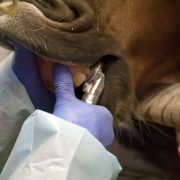Guidelines and recommendations: Companion animals
spotlight topic:
7.c. Companion animals
Published 29 April 2021 | Updated 23 January 2024
- Farrell, S. et al. (2023) A multinational survey of companion animal veterinary clinicians: How can antimicrobial stewardship guidelines be optimised for the target stakeholder? The Veterinary Journal, https://doi.org/10.1016/j.tvjl.2023.106045
- Cazer, C.L. et al. (2023) Pathways to sustainable antimicrobial use in cats. Journal of the American Veterinary Medical Association, 261 (12), pp. 1769-1780. https://doi.org/10.2460/javma.23.08.0481
- et al. (2022). Application of pharmacokinetic/pharmacodynamic concepts to the development of treatment regimens for sporadic canine urinary tract infections: Challenges and paths forward. Journal of Veterinary Pharmacology and Therapeutics, 45 (5), pp. 415– 425. https://doi.org/10.1111/jvp.13088
- Yudhanto, S. et al (2022) Antimicrobial resistance in bacteria isolated from canine urine samples submitted to a veterinary diagnostic laboratory, Illinois, United States. Frontiers in Veterinary Science, 9, no. 867784. https://doi.org/10.3389/fvets.2022.867784
- Fonseca, J. D. et al. (2021) Results of urinary bacterial cultures and antibiotic susceptibility testing of dogs and cats in the UK. Journal of Small Animal Practice, https://doi.org/10.1111/jsap.13406
- Frosini, S.M. et al. (2021) Effect of topical antimicrobial therapy and household cleaning on meticillin‐resistant Staphylococcus pseudintermedius carriage in dogs. Veterinary Record. https://doi.org/10.1002/vetr.937
- PROTECT ME [BSAVA] [online] Available from: https://www.bsava.com/Resources/Veterinary-resources/PROTECT-ME [Accessed 8 April 2021]
- RUMA Companion Animal & Equine Alliance (2022) Annual progress report 2022.[online] Stevenage: RUMA. Available from: https://rumacae.org.uk/reports/ [Accessed 13 January 2023]
- Nind, F. et al (2020) BSAVA Guide to the use of veterinary medicines: antibacterials. Gloucester: BSAVA. [online] Available from:
- AAHA/AAFP (2014) Basic guidelines of judicious therapeutic use of antimicrobials.[online] Available from: https://www.aaha.org/globalassets/02-guidelines/antimicrobials/aafp_aaha_antimicrobialguidelines.pdf [Accessed 8 April 2021]
- Danish Veterinary Association (2018) Antibiotic use guidelines for companion animal practice. 2nd edition. [online] Available from: https://www.ddd.dk/media/2175/assembled_final.pdf [Accessed 8 April 2021]
- Jessen, L.R. et al (2017) Cross-sectional survey on the use and impact of the Danish national antibiotic use guidelines for companion animal practice. Acta Veterinaria Scandinavica, 59, no. 81 https://doi.org/10.1186/s13028-017-0350-8
- Beaudoin, A.L. et al. (2023) Prevalence of antibiotic use for dogs and cats in United States veterinary teaching hospitals, August 2020. Journal of Veterinary Internal Medicine, 37 (5), pp. 1864-1875. https://doi.org/10.1111/jvim.16814
- Scarborough, R. et al (2020) Use of local antibiogram data and antimicrobial importance ratings to select optimal empirical therapies for urinary tract infections in dogs and cats. Antibiotics, 9 (12), 924. https://doi.org/10.3390/antibiotics9120924
- Lehner, C. et al (2020) Effect of antimicrobial stewardship on antimicrobial prescriptions for selected diseases of dogs in Switzerland. Journal of Veterinary Internal Medicine, 34 (6), pp. 2418-2431. https://doi.org/10.1111/jvim.15906
- Hubbuch, A. et al (2020) Antimicrobial prescriptions in cats in Switzerland before and after the introduction of an online antimicrobial stewardship tool. BMC Veterinary Research, 16, no. 229 https://doi.org/10.1186/s12917-020-02447-8
- Weese, J.S. et al (2019) International Society for Companion Animal Infectious Diseases (ISCAID) guidelines for the diagnosis and management of bacterial urinary tract infections in dogs and cats. The Veterinary Journal, 247, pp. 8-25. https://doi.org/10.1016/j.tvjl.2019.02.008
- Wong, C., Epstein, S.E. and Westropp, J.L. (2015) Antimicrobial susceptibility patterns in urinary tract infections in dogs (2010–2013). Journal of Veterinary Internal Medicine, 29 (4), pp. 1045-1052. https://doi.org/10.1111/jvim.13571
- Marques, C. et al (2016) European multicenter study on antimicrobial resistance in bacteria isolated from companion animal urinary tract infections. BMC Veterinary Research, 12, no. 213. https://doi.org/10.1186/s12917-016-0840-3
- Darwich, L. et al (2021) Antimicrobial susceptibility of bacterial isolates from urinary tract infections in companion animals in Spain. Veterinary Record, p. e60. https://doi.org/10.1002/vetr.60
- Guzmán Ramos, P.J. et al (2021) Antimicrobial resistance increased over an 8‐years period in Enterobacteriaceae cultured from canine urine samples. Journal of Small Animal Practice, 62 (4) pp. 279-285. https://doi.org/10.1111/jsap.13291
- Kalnins, N.J. et al (2022) Antimicrobials in dog‐to‐dog bite wounds: A retrospective study of 1526 dog bite events (1999‐2019). Journal of Veterinary Internal Medicine, 36 (6), pp. 2028-2041. https://doi.org/10.1111/jvim.16574
- Hillier, A. et al (2014) Guidelines for the diagnosis and antimicrobial therapy of canine superficial bacterial folliculitis (Antimicrobial Guidelines Working Group of the International Society for Companion Animal Infectious Diseases). Veterinary Dermatology, 25 (3), pp. 163-e43. https://doi.org/10.1111/vde.12118
- Summers, J.F. et al (2012) The effectiveness of systemic antimicrobial treatment in canine superficial and deep pyoderma: a systematic review. Veterinary Dermatology, 23 (4), pp. 305-e61. https://doi.org/10.1111/j.1365-3164.2012.01050.x
- Frosini, S.M. and Loeffler, A. (2020) Treating canine pyoderma with topical antibacterial therapy. In Practice, 42 (6), pp. 323-330. https://doi.org/10.1136/inp.m2591
- RCVS Knowledge (2014) EBVM 2014 conference poster. The effectiveness of systemic antimicrobial treatment in canine pyoderma: a systematic review [online] Available from: https://knowledge.rcvs.org.uk/document-library/ebvm-2014-conference-poster-the-effectiveness-of-systemic/ [Accessed 8 April 2021]
- Lappin, M.R. et al (2017) Antimicrobial use guidelines for treatment of respiratory tract disease in dogs and cats: antimicrobial guidelines working group of the International Society for Companion Animal Infectious Diseases. Journal of Veterinary Internal Medicine, 31 (2), pp. 279-294. https://doi.org/10.1111/jvim.14627
- Rigby, B.E. et al (2021) Incidence and risk factors for surgical site infections following oromaxillofacial oncologic surgery in dogs Frontiers in Veterinary Science, 8, p. 1157. https://doi.org/10.3389/fvets.2021.760628
- Baldrey, V. (2020) Guide to using antibiotics in pet birds. In Practice, 42 (7), pp. 394-404. https://doi.org/10.1136/inp.m3092
- Hedley, J. (2018) Antibiotic usage in rabbits and rodents. In Practice, 40 (6), pp. 230-237. https://doi.org/10.1136/inp.k2642
- Hertzsch, R. and Richter, A. (2022) Systematic review of the pharmacological evidence for the selection of antimicrobials in bacterial infections of the central nervous system in dogs and cats. Frontiers in Veterinary Science, 8, 769588. https://doi.org/10.3389/fvets.2021.769588







Leave a Reply
Want to join the discussion?Feel free to contribute!